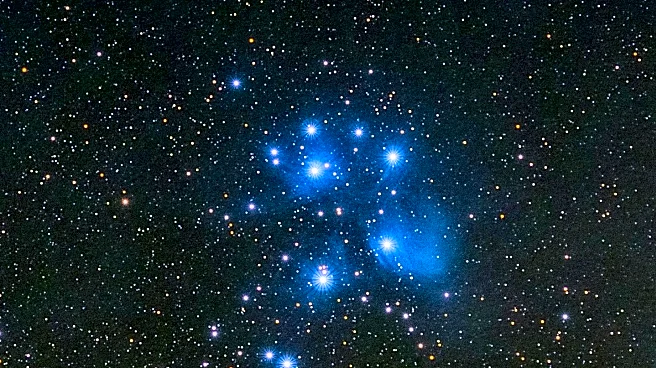What's Happening?
Equuleus, known as the Foal, is a small and faint constellation located southwest of Pegasus. Despite its lack of bright stars, nearby stars, prominent meteor showers, or Messier objects, Equuleus holds historical significance as one of the original 48 constellations documented by Ptolemy in his work, Almagest. The constellation covers a mere 71.64 square degrees of the sky, ranking 87th in size out of the 88 constellations. To locate Equuleus, observers must first identify Epsilon Pegasi and then search approximately 7 degrees due west. Its brightest star, Alpha, has a magnitude of 3.9, making it a challenging constellation to spot. Astronomy enthusiasts who manage to identify Equuleus can take pride in their observational skills.
Why It's Important?
The exploration of Equuleus highlights the enduring interest in historical astronomy and the significance of ancient constellations. While Equuleus may not offer the visual spectacle of brighter constellations, its inclusion in Ptolemy's Almagest underscores the importance of preserving astronomical history. For amateur astronomers, identifying Equuleus can be a rewarding challenge that enhances their understanding of the night sky. This pursuit fosters a deeper appreciation for the cultural and scientific heritage embedded in celestial observations, encouraging continued interest in astronomy as both a hobby and a field of study.
What's Next?
As astronomy enthusiasts continue to explore the night sky, the identification of lesser-known constellations like Equuleus may inspire further interest in historical astronomy. Observers may seek to expand their knowledge by exploring other constellations documented by Ptolemy, contributing to a broader understanding of ancient astronomical practices. Additionally, the challenge of locating faint constellations may encourage the use of advanced telescopic equipment and techniques, promoting technological advancements in amateur astronomy.
Beyond the Headlines
The study of Equuleus and similar constellations can offer insights into the cultural and scientific perspectives of ancient civilizations. Understanding the historical context of these constellations may reveal how early astronomers interpreted the cosmos and integrated celestial observations into their cultural narratives. This exploration can also highlight the evolution of astronomical knowledge and the ways in which modern astronomy builds upon the foundations laid by ancient scholars.












